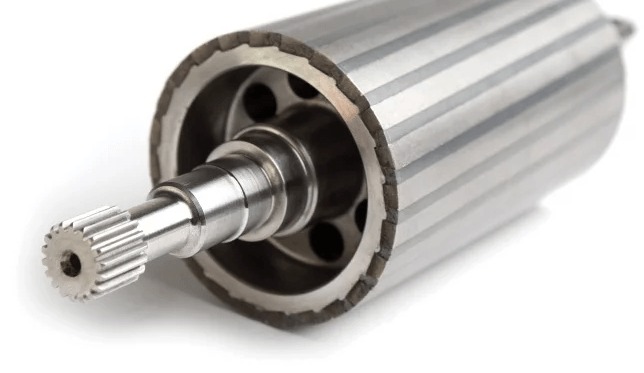Magnetic rotor, or permanent magnet rotor is the non stationary part of a motor. The rotor is the moving part in an electric motor, generator and more. Magnetic rotors are designed with multiple poles. Each pole alternates in polarity (north & south). Opposite poles rotate about a central point or axis (basically, a shaft is located in the middle). This is the principal design for rotors. Rare-earth permanent magnetic motor has a series of advantages, such as small size, light weight, high efficiency and good characteristics. Its applications are very extensive and extend all over fields of aviation, space, defense, equipment manufacturing, industrial and agricultural production and daily life.
Honsen Magnetics mainly produces magnetic components in permanent magnet motor field, especially NdFeB permanent magnet motor accessories which can match all kinds of medium and small permanent magnet motors. Besides, in order to reduce the damage of electromagnetic eddy current to magnets, we make laminated magnets (multi splice magnets). Our company manufactured motor (rotor) shaft at the very beginning, and in order to serve customers better, we started to assemble magnets with rotor shafts afterwards in order to satisfy market demand on high efficiency and low cost.

The rotor is a moving component of an electromagnetic system in the electric motor, electric generator, or alternator. Its rotation is due to the interaction between the windings and magnetic fields which produces a torque around the rotor's axis.
Induction (asynchronous) motors, generators and alternators (synchronous) have an electromagnetic system consisting of a stator and rotor. There are two designs for the rotor in an induction motor: squirrel cage and wound. In generators and alternators, the rotor designs are salient pole or cylindrical.
In a three-phase induction machine, alternating current supplied to the stator windings energizes it to create a rotating magnetic flux. The flux generates a magnetic field in the air gap between the stator and the rotor and induces a voltage which produces current through the rotor bars. The rotor circuit is shorted and current flows in the rotor conductors. The action of the rotating flux and the current produces a force that generates a torque to start the motor.
An alternator rotor is made up of a wire coil enveloped around an iron core. The magnetic component of the rotor is made from steel laminations to aid stamping conductor slots to specific shapes and sizes. As currents travel through the wire coil a magnetic field is created around the core, which is referred to as field current. The field current strength controls the power level of the magnetic field. Direct current (DC) drives the field current in one direction, and is delivered to the wire coil by a set of brushes and slip rings. Like any magnet, the magnetic field produced has a north and a south pole. The normal clockwise direction of the motor that the rotor is powering can be manipulated by using the magnets and magnetic fields installed in the design of the rotor, allowing the motor to run in reverse or counterclockwise.